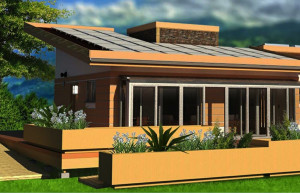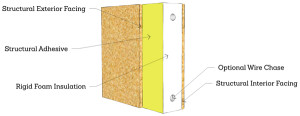 The U.S. Department of Energy Solar Decathlon 2013’s goal is to educate student participants and the general public with its challenge to collegiate teams to design, build, and operate solar-powered houses that are cost-effective, energy-efficient, and attractive. Each year, the competition level increases, with this year’s challenge having twice the number of applicants and a total of twenty teams selected.
The U.S. Department of Energy Solar Decathlon 2013’s goal is to educate student participants and the general public with its challenge to collegiate teams to design, build, and operate solar-powered houses that are cost-effective, energy-efficient, and attractive. Each year, the competition level increases, with this year’s challenge having twice the number of applicants and a total of twenty teams selected.
Schaefer is on the West Virginia University team, volunteering our time to the challenge of designing and building a solar powered house.
The WVU team chose SIPs because they are energy efficient, have a high R-value, reduce site waste, and are airtight. A reflection of Appalachia culture and history, the design ties elements of its natural surroundings with the demands of modern society. Although it appears to be a log cabin, the exterior is actually SIP panels with half-log exterior. The walls and ceiling of the home will all be constructed using structural insulated panels. The team put together a computer-animated walkthrough of their submittal showcasing the affordability, energy efficiency and reliability of their design.
 The house has to be as modular as possible and purely solar-powered. SIP panels are cut to size and delivered to the job site – allowing for faster and more efficient construction. Once constructed in West Virginia to test the feasibility of design, the house is taken apart and re-constructed in Orange County Great Park, Irvine, California for the two-week exhibition and judging (October 3-13,2013), then moved back to West Virginia for its permanent home near Charleston.
The house has to be as modular as possible and purely solar-powered. SIP panels are cut to size and delivered to the job site – allowing for faster and more efficient construction. Once constructed in West Virginia to test the feasibility of design, the house is taken apart and re-constructed in Orange County Great Park, Irvine, California for the two-week exhibition and judging (October 3-13,2013), then moved back to West Virginia for its permanent home near Charleston.
The winner of the competition is the team that best blends affordability, consumer appeal, and design excellence with optimal energy production and maximum efficiency.
